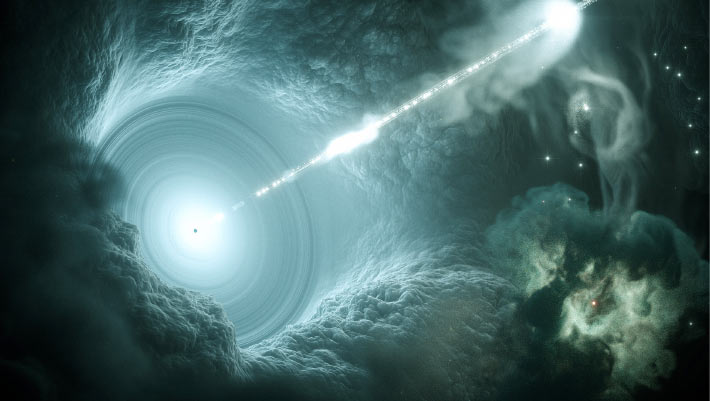Astronomers have discovered a blazar — a quasar with a jet aligned along our line of sight — at redshift of 7. Named VLASS J041009.05-013919.88, this object is the most distant blazar ever identified, providing a rare glimpse into the epoch of reionization when the Universe was less than 800 million years old.
VLASS J041009.05-013919.88 (J0410-0139 for short) is powered by a black hole with a mass of 700 million solar masses.
Multi-wavelength observations show that its radio variability, compact structure, and X-ray properties identify it as a blazar with a jet aligned toward Earth.
The discovery of J0410-0139 implies the existence of a much larger population of similar jetted sources in the early Universe.
These jets likely enhance black hole growth and significantly affect their host galaxies.
“The fact that J0410–0139 is a blazar, a jet that by chance happens to point directly towards Earth, has immediate statistical implications,” said Dr. Eduardo Bañados, an astronomer at the Max Planck Institute for Astronomy.
“As a real-life analogy, imagine that you read about someone who has won $100 million in a lottery.”
“Given how rare such a win is, you can immediately deduce that there must have been many more people who participated in that lottery but have not won such an exorbitant amount.”
“Similarly, finding one active galactic nucleus with a jet pointing directly towards us implies that at that time, there must have been many active galactic nuclei in that period of cosmic history with jets that do not point at us.”
“Where there is one, there’s one hundred more,” said Dr. Silvia Belladitta, also from the Max Planck Institute for Astronomy.
Observations with instruments such as NSF’s Very Large Array, NSF’s Very Long Baseline Array, NASA’s Chandra X-ray Observatory, and the Atacama Large Millimeter/submillimeter Array (ALMA) indicate that J0410-0139 exhibits radio emission amplified by relativistic beaming, a hallmark of…
Read the full article here





